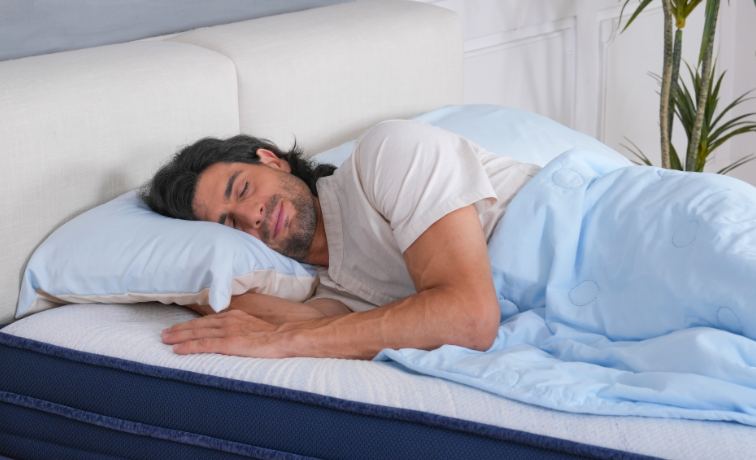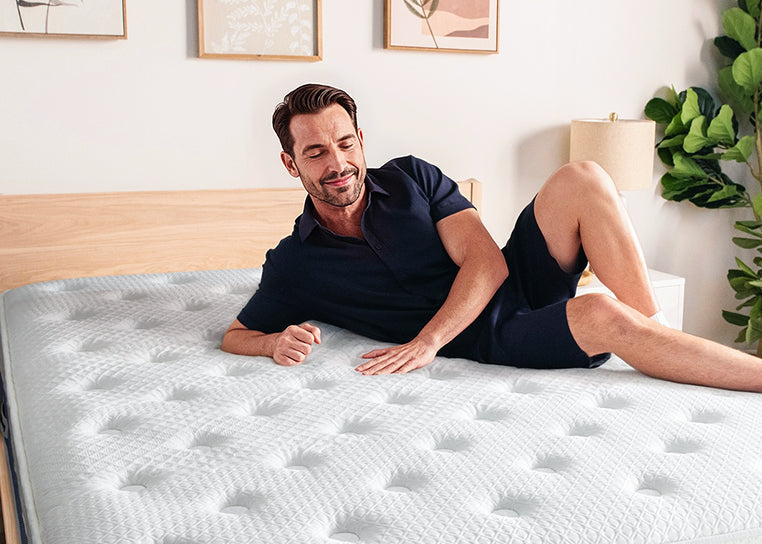Your mattress plays a crucial role in your overall well-being, influencing both your sleep quality and spinal health. But like all things, mattresses have a lifespan. Whether you’re dealing with wear and tear or simply experiencing a decline in sleep quality, knowing when it’s time to replace your mattress is key.
In this guide, we’ll explore the factors that determine a mattress's lifespan and provide practical advice on when to replace your mattress based on age, use, and other important factors.
Average Mattress Lifespan
Generally, most mattresses last between 7 and 10 years, but this can vary depending on the material, the quality of craftsmanship, and how well you take care of it. Here’s a breakdown of typical lifespans based on mattress type:
-
Innerspring Mattresses: Typically last 7-8 years.
-
Memory Foam Mattresses: Can last 8-10 years with proper care.
-
Hybrid Mattresses: Usually last between 8-10 years.
-
Latex Mattresses: Known for durability, lasting 10-12 years or more.
Signs It's Time to Replace Your Mattress
-
Visible Sagging and Impressions Over time, the foam or springs in your mattress can begin to lose their shape, leading to sagging or visible impressions where you sleep. If you notice these indentations and they are uncomfortable to sleep in, it’s a clear sign that your mattress needs to be replaced. Sagging may lead to poor spinal alignment, which can cause back pain and disrupt sleep.
-
Worn-Out Edges The edges of your mattress should remain firm and supportive. If you notice the edges are soft or collapse when you sit on them, this could mean the mattress is losing its structural integrity. Worn edges often indicate that the materials inside the mattress are degrading, which reduces its overall support.
-
Increased Allergies and Asthma Symptoms Mattresses can trap dust mites, allergens, and bacteria over time. If your allergies or asthma symptoms worsen, it could be due to the buildup of allergens within the mattress. Regular cleaning helps, but if the mattress is old, it may be time to replace it to avoid health issues.
-
Persistent Pain and Discomfort If you wake up with aches and pains, especially in your back, shoulders, or neck, it could be because your mattress is no longer offering the proper support. A good mattress should conform to your body, relieving pressure points while keeping your spine aligned. If you’re finding it harder to get comfortable or wake up sore, this is a strong indicator that your mattress has outlived its useful life.
-
Noisy Springs or Creaking If your mattress makes noises when you move, particularly with innerspring mattresses, it could signal that the springs or coils inside are worn out. The creaking or squeaking noises suggest that the internal structure is deteriorating, and this can affect the comfort and support of the mattress.
-
Unpleasant Odors Old mattresses can begin to develop odors from mold, mildew, or accumulated body fluids (sweat, oils). While regular cleaning can help to some extent, if odors persist and are difficult to eliminate, it's a good idea to consider a replacement.
How Age Affects Mattress Quality
-
Under 5 Years: A mattress in this range is usually still in great shape, provided it's been properly cared for. However, if you notice sagging or discomfort early, it could be a sign of poor-quality materials. If your mattress is less than 5 years old and is already causing discomfort, you might want to consider returning it or investigating warranty options.
-
5-7 Years: Between 5 and 7 years, a mattress will begin showing signs of wear depending on usage. If you start experiencing discomfort or notice minor sagging, it's a good idea to evaluate its support and comfort levels. If you're waking up feeling tired or with aches and pains, a new mattress could be a better option.
-
7-10 Years: This is the period when many mattresses begin to reach the end of their lifespan. By now, wear and tear, such as sagging, uncomfortable dips, or a lack of support, will likely become noticeable. If you’re in this range, it’s time to consider a replacement to maintain your sleep quality and overall health.
-
10+ Years: A mattress older than 10 years should definitely be replaced. Even if it doesn’t show visible signs of wear, the materials inside will have started to degrade, and it’s no longer providing optimal support. An old mattress can severely impact sleep quality, leading to chronic discomfort, poor sleep, and even long-term health problems.
Mattress Use and Its Impact on Lifespan
The way you use your mattress affects how long it lasts. Here are some factors that can accelerate wear and tear:
-
Sleeping Habits: Sleeping in the same spot every night can cause uneven wear. Rotating your mattress every 3-6 months can help prevent this.
-
Body Weight: Heavier individuals may experience faster wear, especially on memory foam or innerspring mattresses.
-
Pets: Pets that sleep on the bed can contribute to faster wear, especially if they bring dirt, oils, or moisture with them.
-
Mattress Care: Regular maintenance, such as cleaning and rotating, can extend your mattress's lifespan.
Conclusion: The Importance of Replacing Your Mattress on Time
Replacing your mattress when it’s no longer providing the support and comfort you need is crucial for maintaining good sleep health. Whether your mattress is 5 years old or 12, understanding the signs of wear and considering the impact of age and use will help ensure you enjoy restful, pain-free sleep.
BedStory mattresses are designed to offer lasting comfort and support, but proper care and timely replacement are key to ensuring your mattress continues to meet your needs for years to come.



Leave a comment
This site is protected by hCaptcha and the hCaptcha Privacy Policy and Terms of Service apply.